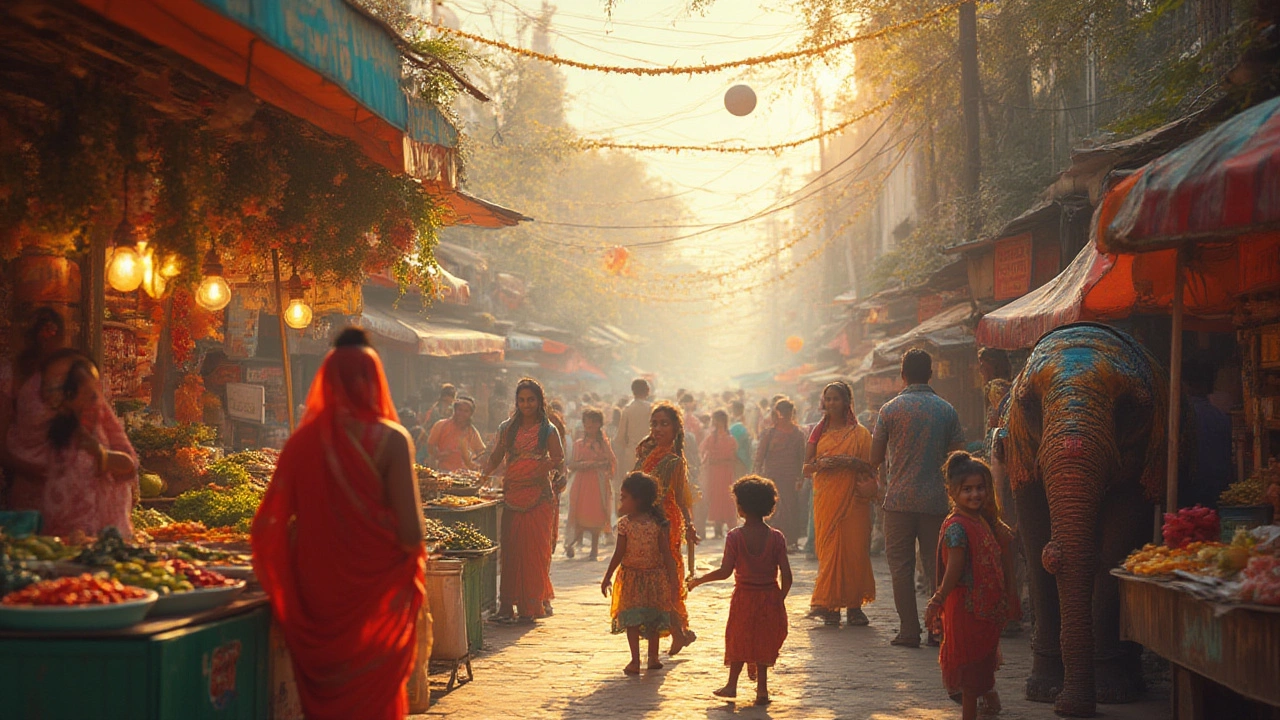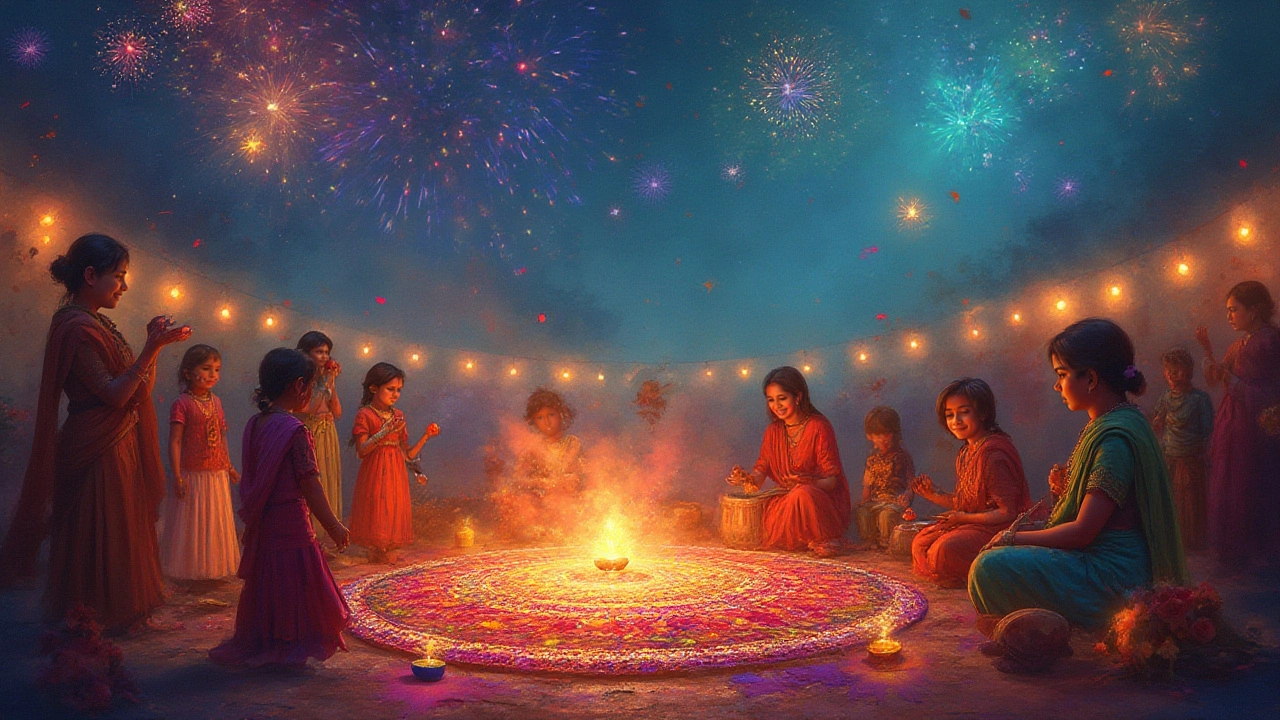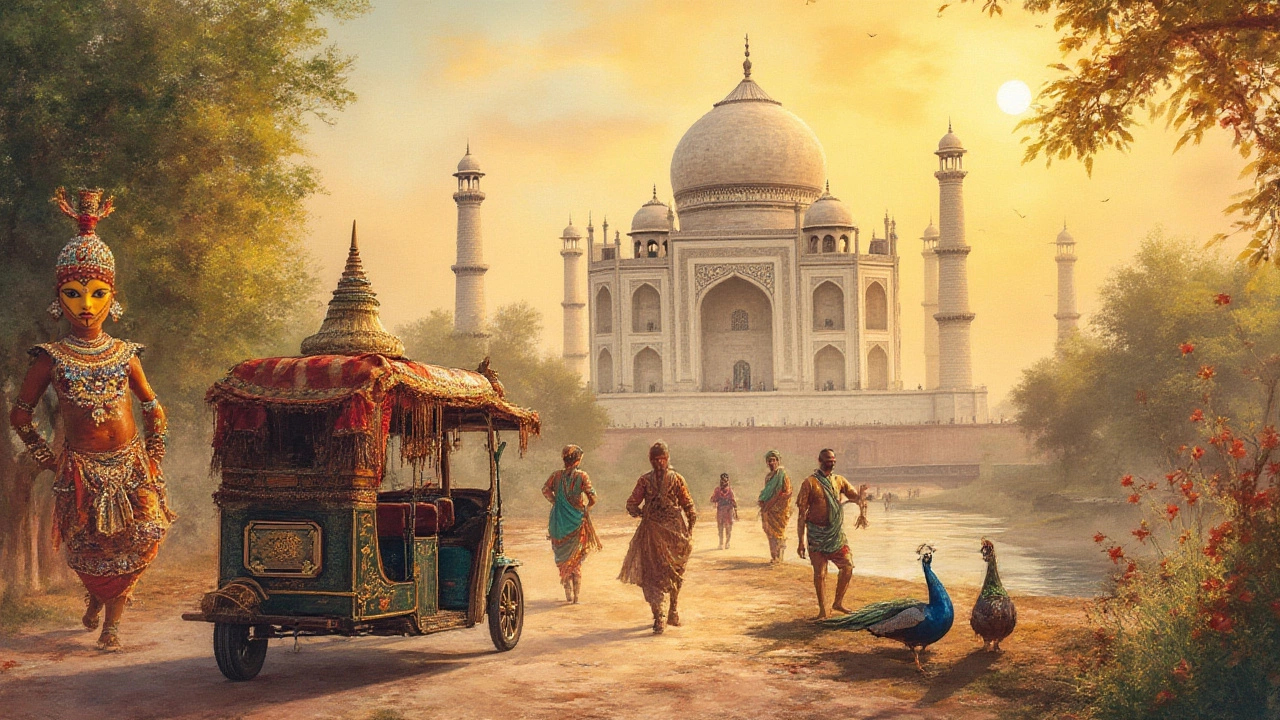
Have you ever tried catching a rickshaw at rush-hour in Mumbai? There’s a sharp magic in the chaos here—an unlikely mix of heat, color, and the chatter of millions, where something wild and memorable seems to lurk around every corner. You find yourself debating the perfect chai recipe with a stranger, petting a street puppy, dodging a sacred cow, and then stumbling on a hidden temple behind a street vendor. India is not only vast; it’s layered, full of surprises, and nothing about it is generic.
The Tapestry of Indian Culture: Stories in Every Corner
India isn’t so much a country as it is a living storybook with over 1.4 billion characters and a thousand different plotlines. Seriously, take languages for a start: official numbers place the count at 22 scheduled languages, but listen on any busy train and you’ll catch dozens of dialects mixing together. Hindi, Bengali, Marathi (my own daily tongue in Mumbai), Tamil, Gujarati—the words bounce and blend, making the markets sound almost like musical jams.
What’s really wild is how ancient everything feels, yet how modern life barges in unapologetically. People often chat on their smartphones while standing in front of centuries-old temples. You could see a building that predates Shakespeare with a satellite dish stuck to its roof. Step into Varanasi, the city that’s been lived in for over 3,000 years, and you’ll watch funeral pyres burn on the ghats while cafés nearby serve up Wi-Fi and espressos.
Family isn’t a word here—it’s an experience. Weddings run for days, with hundreds of relatives and friends turning up in gold-studded saris, dancing until dawn. You won’t ever hear silence in an Indian home because even at midnight, there’s always someone frying pakoras or giggling in the kitchen. Communities aren’t just neighbors; they’re playmates, old aunties bringing laddoos, and borrowed books that never make their way back.
Something else you’ll notice: respect is big. Touching an elder’s feet is still common, reflecting deep-rooted humility. At the same time, don’t be surprised if a nine-year-old with shiniest hair lectures you on cricket stats or quizzes you on why Mumbai’s trains never run on time. Authority and playful rebellion often go hand in hand here.
Now let’s talk design. Whether it’s the orange-red sands of Rajasthan making the palaces glow, or the blue-lit alleys of Jodhpur at sunrise, India loves color. Even humble rickshaws sport bright stickers of deities or painted phrases in Hindi, wishing you a safe trip. Step into a train station and you might see a mosaic mural or a cluster of sari-clad women turning an ordinary bench into something out of a Bollywood set.
Speaking of Bollywood, this country churns out nearly 2,000 films every year—romantic, dramatic, wild, sometimes utterly nonsensical, but always bursting with music and melodrama. Families watch together, shouting advice at the heroes and booing the villains in their living rooms, chewing on samosas as the drama unfolds.
- Yoga was born here, in the ashrams of Rishikesh, now traveled globally from LA to Tokyo.
- Chess (chaturanga) and snakes-and-ladders (moksha patam) both started out as childhood games in Indian households.
- India has the world’s largest postal network. Letters often reach remote villages via boats, oxen, or even runners.
- The Kumbh Mela, a giant spiritual festival, attracts nearly 50 million visitors—making it visible from space!
No matter where you turn, India isn’t shy about blending old and new, hosting quirks you literally won’t find anywhere else.

Food, Spices, and Ritual: Why Indian Cuisine is Unforgettable
Ever tried explaining Indian food to someone who’s never tasted it? It’s like recounting a dream—there are layers, depth, tiny sparkly moments you can’t quite describe. Each bite in India carries geography and history. There’s a salty tang in a Gujarati dhokla, sharp and bright with mustard seeds and coriander, while down south in Kerala, you’ll find seafood dishes wrapped in banana leaves and infused with coconut and curry leaf.
Spice isn’t only about heat. It’s about alchemy. Black peppercorns (which started the Spice Route), turmeric (now famous for turmeric lattes everywhere), cardamom, cumin, star anise—each masala tin in an Indian kitchen is a treasure chest. My grandmother always insisted on crushing her cardamom fresh, swearing it made her kheer taste ‘like a hug.’
There’s a rhythm to Indian meals. Breakfast isn’t just toast; it could be fluffy idlis dipped in samba, parathas dripping ghee in Punjab, or poha in Maharashtra, bright yellow with turmeric, peanuts, and fresh coriander. Lunches stretch late. In Bengal, it’s rice and fish curry eaten with fingers, while in Rajasthan, millet rotis and spicy kadi are the norm. Don’t forget street food—the true mascot of India. Pav bhaji, chaat, vada pav, pani puri—each busy corner hides someone who claims their recipe is the real deal, and honestly, you just have to try them all.
Food is tied to ritual too. Festivals mean sweets—laddoos for Diwali, modaks for Ganesh Chaturthi, jalebi and imarti swimming in sugar syrup during Muslim Eid or Jain Paryushan. Even little moments become sacred. At many homes, a bite of food is offered to a deity before the family begins eating. And when in doubt, chai solves everything—a drink, a warm pause, a gossip session, or a peace treaty.
Farmers’ markets, called mandis, burst with chillies, lentils, and fruit you might never have seen, like jamun or custard apple. Fasting is another quirky trait—people actually look forward to skipping meals but feasting on special ‘fasting food’ like sabudana khichdi that still tastes sinful.
For the especially adventurous, every Indian city hides a secret eating spot: Mumbai’s Irani cafés serve berry pulao and sweet bun-maska; Hyderabad runs on biryani; Delhi’s old alleys dish out nihari and kebabs at 3AM. Even the order of eating matters, with sweets often served first in Bengal, which always made sense to me—why wait till last?
Take a look at how diverse Indian food really is:
| Region | Signature Dish | Main Ingredients |
|---|---|---|
| Punjab | Butter Chicken | Chicken, butter, cream, spices |
| Maharashtra | Pav Bhaji | Bread, mixed vegetables, butter, spices |
| Bengal | Machher Jhol | Fish, mustard oil, potatoes, turmeric |
| Tamil Nadu | Dosa | Rice, urad dal, oil, sambar, chutney |
| Kerala | Appam with Stew | Rice flour, coconut milk, mixed veggies/meat |
If you’re traveling, try whatever’s local and seasonal. The taste will ground you to the spot and make even the messiest street feel like a five-star dining room.

Festivals, Faith, and Everyday Surprises That Set India Apart
If you only see India for its colors in photographs, you’re missing the rhythm. In fact, if you check the Indian calendar, barely a week passes without a festival. Each one floods the streets with chaos and joy. Holi’s clouds of pink and green make even the shyest neighbors into rainbow warriors. During Diwali, whole neighborhoods light candles and burst fireworks, pushing darkness out. In South India, Pongal welcomes the harvest with sweet rice boiling over to mean plenty for all. Eid mornings smell of biryani in Hyderabad, while Christmas in Goa means cakes stuffed with dried fruit and feni to wash it down.
The fun is in the unpredictability. You’ll spot Ganesh idols bobbing on the Arabian Sea during visarjan in Mumbai. On Makar Sankranti, everyone’s out on rooftops flying kites, racing them against monsoon winds. And in Kerala’s Onam, floral carpets bloom silently at every threshold, each pattern unique as a fingerprint. It’s not just for show—festivals here are excuses to gather, eat, debate, and, most of all, share. My neighbor in Mumbai never forgets to send over sweets, regardless of who’s fasting or feasting that season.
Religion isn’t a hushed subject; it’s lived out loud, in rituals, songs, bells ringing from temples at dawn or the call to prayer echoing as the sun sets. There are faiths you may never have heard of—like Zoroastrianism, followed by the Parsis whose cafes fill with laughter and wafer-thin omelets. In Ladakh, Buddhist prayer flags flutter from mountain passes, and in the northeast, there are tribal festivals that celebrate the rice cycle with wild music and bamboo feasts.
But it’s not just about the official celebrations. Everyday life here is full of tiny, wonderful surprises. Once, while walking Luna (my rather temperamental tuxedo cat), I found myself at a tea vendor’s stall where a whole saga unfolded about a parrot that solved math questions. Another time, a fishmonger recited Sanskrit verses while wrapping my pomfret. India’s charm lives in these moments—the unplanned and irregular.
The streets are their own world—cricket played with sticks and plastic balls, songbirds trained to sing at festivals, a sudden downpour that has everyone running for cover and then, just as suddenly, back to business as if nothing happened. Regular days are spiked with the unusual: fortune-tellers under banyan trees, elephants in wedding processions, musicians in the Mumbai metro performing for pocket change and applause.
City or village, India likes to surprise you with things you didn’t even know you were looking for. Maybe the local train is late (again), but you’ll end up swapping snack recipes with fellow passengers. Maybe you’re woken at dawn by a temple bell (and a fleet of honking scooters), but then get invited for a cup of freshly brewed chai by a neighbor you only know because their toddler once tried to feed your cat a samosa.
India doesn’t so much change you as sift you—making you notice, listen, taste, question, and laugh. There’s something special here, and the more you seek, the more you see: a country stitched together not just by flags or rules, but by a million tiny acts of defiant happiness, shared rituals, and everyday magic that refuses to fade.